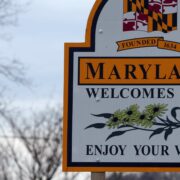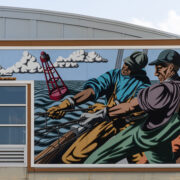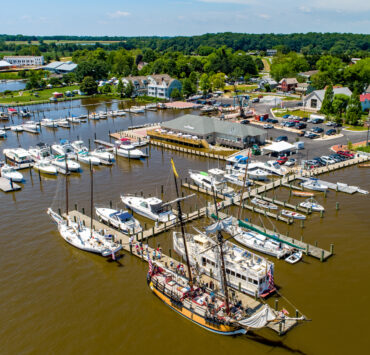A Deep D(r)ive Into Maryland Horse Racing

Maryland’s ties to horse racing run deep. Racing’s association in the state, the Maryland Jockey Club, was founded in 1743, making it the oldest sporting organization in the United States. Save for a certain political revolution and a brief hiatus from the flat track between 1889 to 1904, the Maryland Jockey Club has continued to organize thoroughbred horse races for 278 years after its founding. Over that time, the sport became part of the state’s cultural fabric, producing legendary competitors, sprawling horse farms in the countryside, and an industry that, according to a 2018 report, supports 21,000 jobs and provides $500 million in economic impact. And as many people across the country know, on the third Saturday in May, Maryland plays host to the Preakness Stakes, the second leg of horse racing’s Triple Crown.
The 146th edition is set for May 15, with a limited number of fans returning to the stands after last year’s race was pushed to October and held without spectators.
With the eyes of the sports world turning to Baltimore to see if the Kentucky Derby winner can make it two-for-two, now is an opportune time to hop in the car and explore Maryland’s connection with the “sport of kings.”
Pimlico Race Course – Baltimore, MD
What better place to start than the fabled venue for the race itself? Opened in 1870, Pimlico is the second oldest thoroughbred racetrack still in operation, behind only Saratoga Race Course in New York. While the glass, concrete, and steel of the Grandstand and Clubhouse are clearly relics of the mid-century revitalization efforts, the wooden Old Grandstand, located along the beginning of the homestretch, has a much more old-timey feel, like stepping back in time. Parts of it are believed to date to 1894.
Upon arrival, head up to the second-floor Hall of Fame room, where there’s a small exhibit of old photos, news clippings, painted jockey portraits, an early 20th-century betting machine, and other ephemera. A fire destroyed Pimlico’s ornate Victorian-style clubhouse in 1966, taking records and other memorabilia along with it, but the displays speak to the track’s enduring legacy. The museum is open to the public on live-racing days at the track.
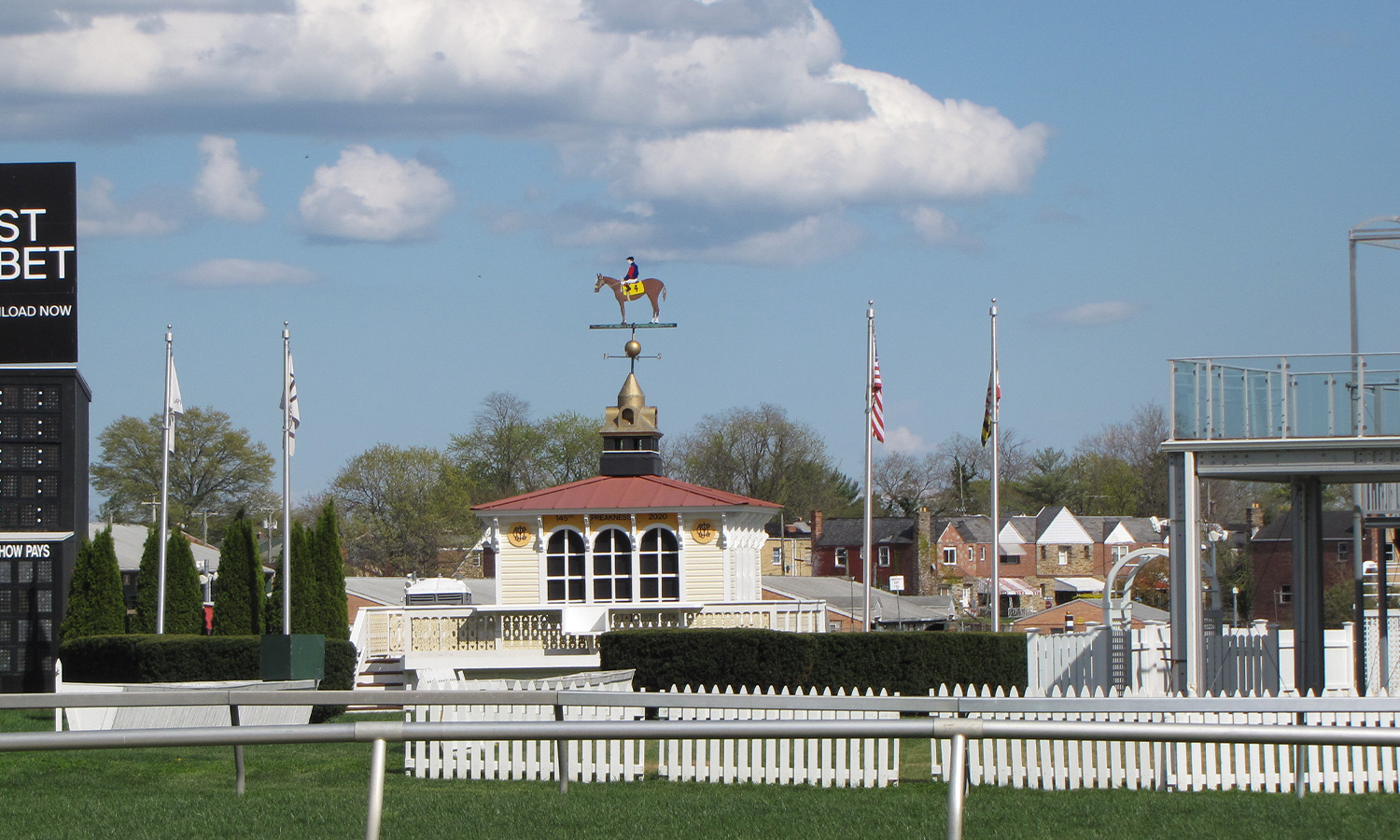
The weather vane from the old clubhouse — depicting a horse and jockey, whose silks are painted, per tradition, in the colors of that year’s Preakness winner— was later recovered and is on display in the exhibit. A replica of the clubhouse cupola with a new weather vane is positioned on the infield of the track just beyond the finish line, where the ritual of painting the jockey’s silks and the horse’s coat to match the winners is carried out shortly after each Preakness.
Of course, a day at the track is a whole experience itself. Pimlico has live racing every Thursday to Sunday through June 27, except for the Sunday following the Preakness. Most days patrons can roam the cavernous buildings to take in the races from different vantage points, including on the rail near the dirt, and check out the field of horses in the paddock.

Be sure to buy a program to learn all the nuances of wagering and studying the horses if you want to make a bet.
Glen Riddle Golf Club – Berlin, MD
This once-sprawling Glen Riddle Farm, located a short drive away from Ocean City, is now the site of two 18-hole golf courses named for Man o’ War and War Admiral, two superhorses who roamed the grounds here in the early 20th century.
Man o’ War won 20 of his 21 starts from 1919 to 1920, often while carrying more weight than his challengers, a stretch of dominance that some say place him as the greatest horse of the 20th century. In a historical quirk, Man o’ War did not win the Triple Crown because owner Samuel D. Riddle declined to enter him into the Kentucky Derby, which was then run 10 days before the Preakness.
Man o’ War’s most famous son, War Admiral, did manage to sweep all three races in 1937. However, he is as well known for losing to the underdog Seabiscuit during the 1938 Pimlico Special at Old Hilltop, sometimes dubbed the “Race of the Century,” an event that drew an estimated 40 million radio listeners.
Riddle died in 1951, a fire in 1969 destroyed the mansion at Glen Riddle, and the farm sat abandoned for years thereafter. In 2002, the company Ruark Golf acquired the property to build the courses and a housing community. While many farm buildings were beyond saving, the company did rehab the main stable and converted it into a pro shop and Ruth’s Chris Steakhouse location.
Walking through the museum hall today, visitors can learn about the life of Man o’ War and the “Race of the Century” through interpretive art and displays. (Head to the Calvin B. Taylor House Museum in downtown Berlin to learn even more through a photo exhibit.) Inside the restaurant, artist Patrick Henry painted portraits of some of Glen Riddle’s most famous champions and murals depicting the estate as it would have looked at its peak. The original stall doors from the stable were repurposed as table tops for the bar and grill.
Even on the courses, there are still remnants from Glen Riddle’s horsey heyday, such as the rusty chicken coops just before the 1st tee on War Admiral and the restored water tower standing behind the 9th green on Man o’ War.
Perhaps the best touch is the long strip of training track that was kept — complete with a rusted, partially collapsed starting gate — and incorporated as a sand trap that comes into play on holes 6, 8, and 9 on Man o’ War.
Belair Stable Museum – Bowie, MD
Belair’s connection to thoroughbreds is nearly as old as the Maryland Jockey Club. In colonial times, the land was part of a sprawling slave-operated plantation owned by Gov. Samuel Ogle. In 1747, Ogle and his brother-in-law, Col. Benjamin Tasker, imported two English thoroughbreds, hoping to build up the bloodstock in the colony. Most notably, Tasker five years later imported Selima, who became a significant broodmare in the 18th century.
Many fans are likely familiar with Belair Stud from the era of William Woodward Sr., who produced Triple Crown winners Gallant Fox and Omaha, the only father-and-son pair to accomplish the feat, during the 1930s.
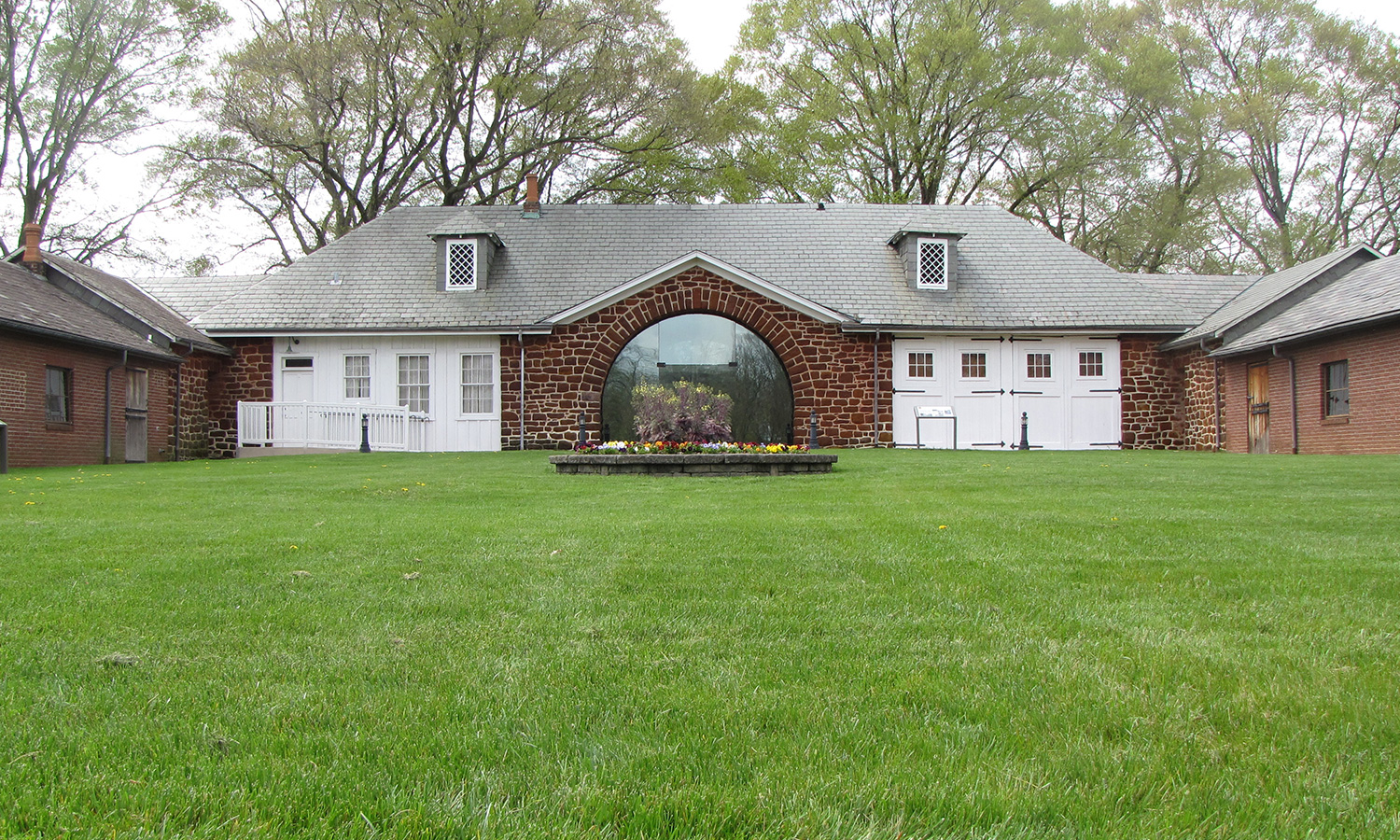
The stable, constructed in 1907 in an architectural style reminiscent of the English countryside, is now a museum weaving together the Ogle and Woodward histories along with the story of the growth and development of horse racing in Maryland. A library boasts an impressive collection of books, records, and trophies showcasing the region’s rich racing legacy. There’s also a special exhibit on the African-American jockeys and horsemen who made significant contributions to the sport following the Civil War, only to be forced out by racist Jim Crow laws.
But the greatest attention is given to Woodward’s champions, a group that also includes Nashua, winner of the 1955 Preakness and Belmont Stakes. He finished second in the Kentucky Derby to Swaps but later beat him in a match race.
The mansion dating back to Ogle’s lifetime still stands and is open to tours.
Fair Hill – Elkton, MD
Once part of an estate owned by William du Pont Jr., Fair Hill is now 5,600-plus acres of preserved fields and forests available for camping, fishing, hiking, and events. It’s also home to a turf course for steeplechase, timber, and flat races and one of the premier thoroughbred training centers in the state. Some of the top trainers operating in the state, like Claude McGaughey III, H. Graham Motion, and Michael J. Trombetta, to name a few, operate stables there.
Local residents used to be able to visit the training track and watch thoroughbreds work out, but now the facility is restricted to owners and trainers for safety reasons.
Even so, parts of the center can be seen by car or foot, and you might even spot an elite thoroughbred grazing in a paddock or poking their head out a stable door. For a nice hike, head to Route 273 Parking Lot marking the start of the Orange Trail. The path takes you past open-air paddocks and a couple of barns before continuing through fields and woods toward Bik Elk Creek.
Alternatively, you can turn onto Kennel Road from Route 273 and travel along Training Center Drive, a route that takes you past even more stables.
Graw Alley – Havre de Grace, MD
It is said this small town was once known as “Little Chicago,” and the reason has nothing to do with deep-dish pizza.
In 1912, with several neighboring states having bans on gambling or horse racing altogether, Havre de Grace Racetrack opened, drawing spectators from Philadelphia, New York, Baltimore, and Washington, D.C. With the implementation of Prohibition eight years later — a law Maryland chose not to enforce — speakeasies, brothels, and bookmakers popped up across town.

During the 1920s and 1940s, some of racing’s greatest champions, including Man o’ War and War Admiral, ran at “The Graw,” as the track came to be known. Months before going head-to-head with War Admiral, Seabiscuit finished first in the Havre de Grace Handicap. In a major upset, local horse Saggy beat Citation, the eventual winner of the Triple Crown in 1948. Citation managed to turn the tables on Saggy in the Chesapeake Stakes a week later.
Graw Alley, located just off Market Street, celebrates the town’s history — including the raucous Prohibition era — and horse racing legacy with a series of painted murals. One, “Dream Race at the Graw,” is a fictional contest between seven of the legends who competed here: Whirlaway, Seabiscuit, Exterminator, Sir Barton, War Admiral, Citation, and Man o’ War. For good measure, the filly named after the track, who beat the boys in the 2011 Woodward Stakes at Saratoga and won Horse of the Year, is also included.
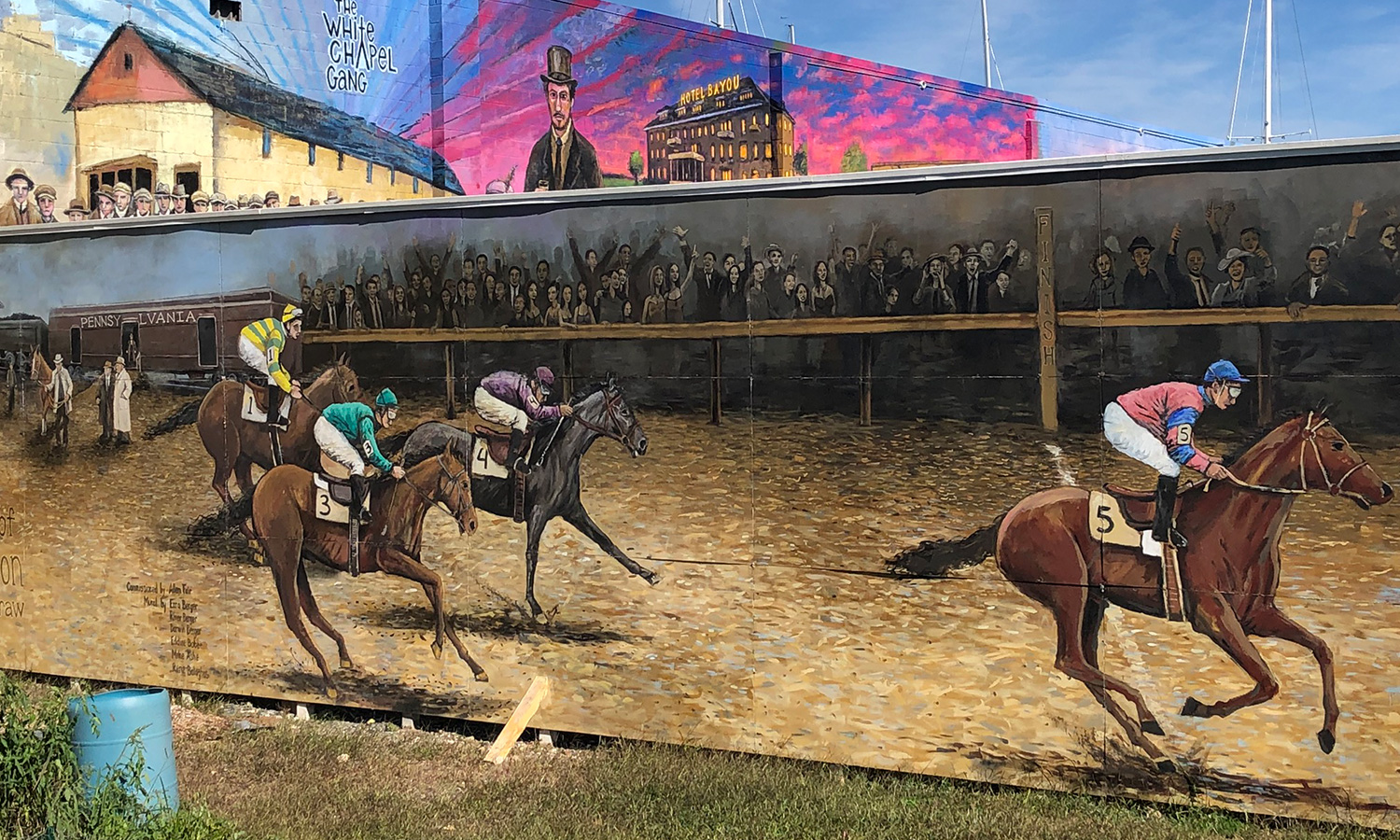
In addition to murals singling out Citation and Seabiscuit, there’s also an old ticket booth from The Graw, an old starting gate, and a sign reproducing a 1993 feature article on the track’s history.
Rollbacks on regulations in other states eventually brought on more competition, forcing the owners of Havre de Grace Racetrack to sell their racing dates to the Maryland Jockey Club in 1951. The site of the track became a National Guard Armory, which is still in use to this day.
Lead Photo: Maryland Jockey Club
About the Author
Brandon Weigel is a writer and editor based in Baltimore. His work has appeared in Baltimore Fishbowl, City Paper, The Washington Post, and other outlets. When not traveling the state, you're likely to find him enjoying a good whiskey, watching the Orioles and Ravens, or driving his beloved vintage Mercedes.











